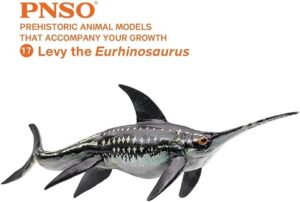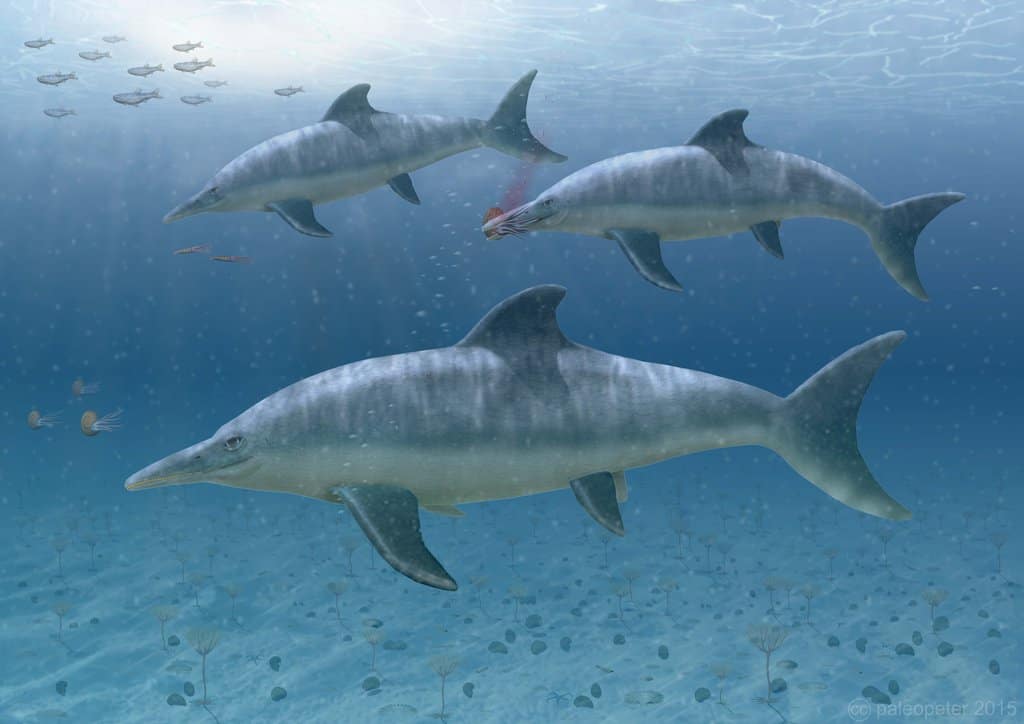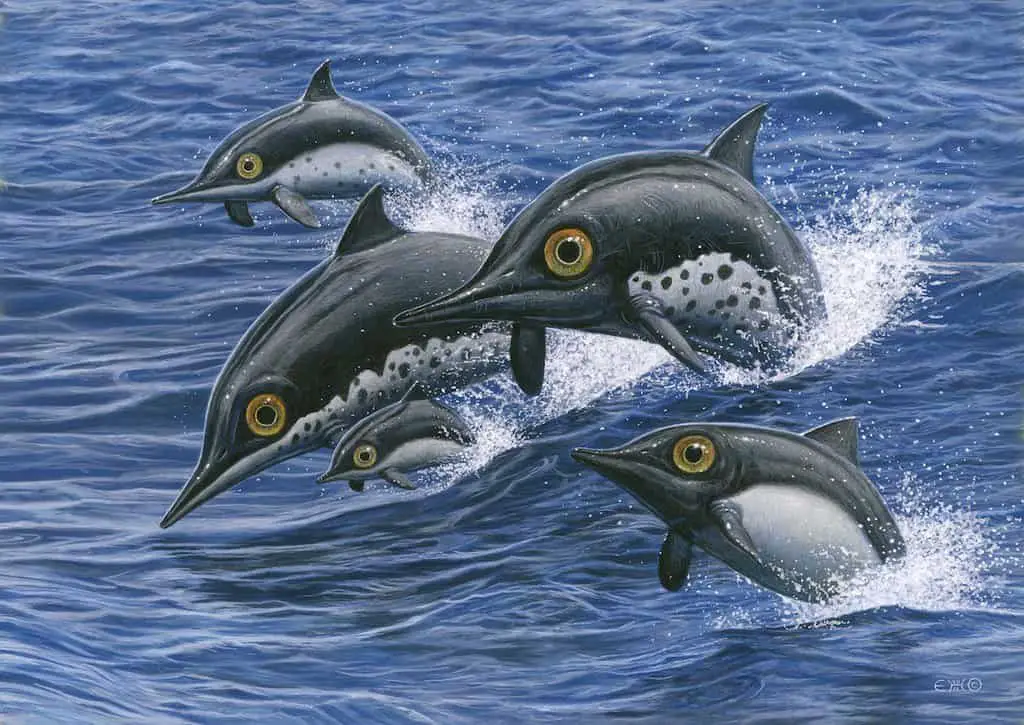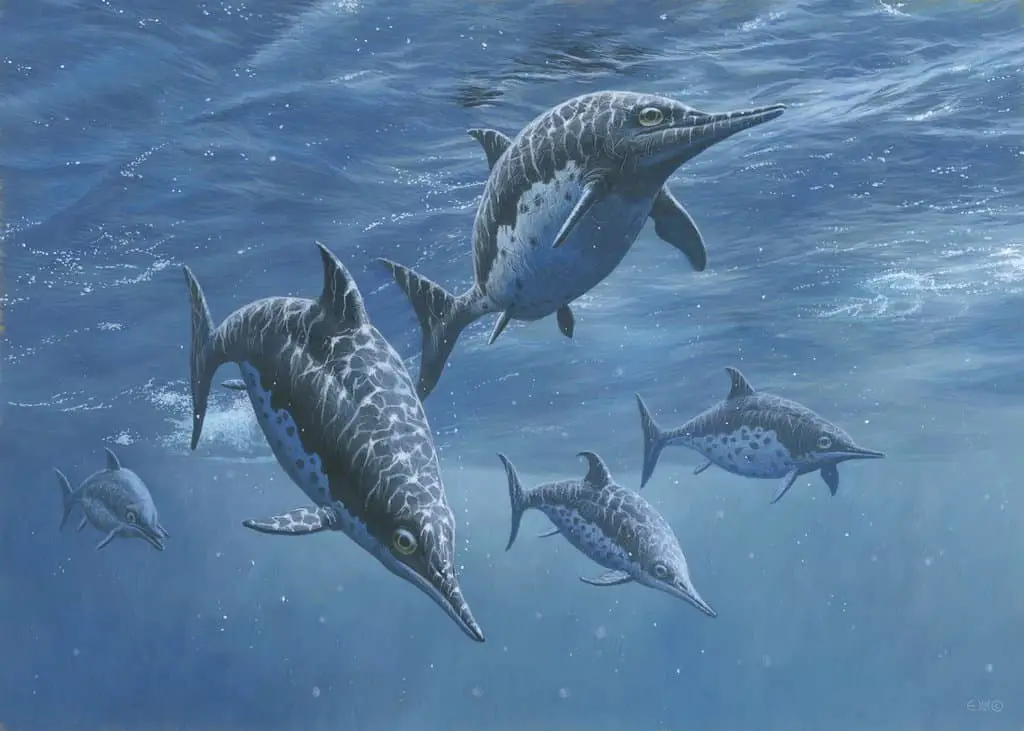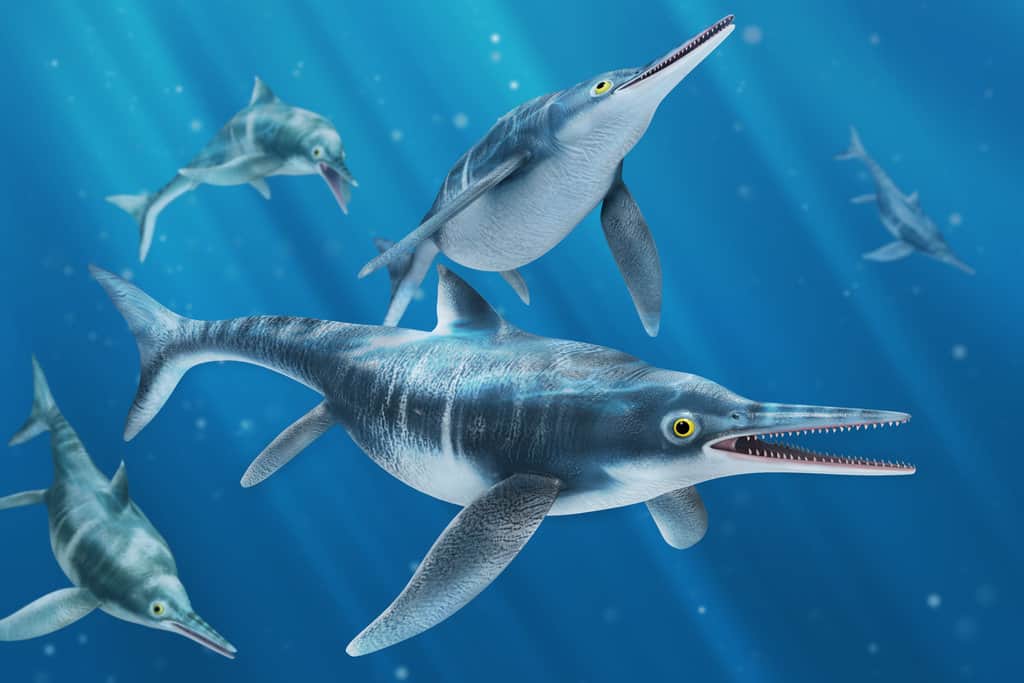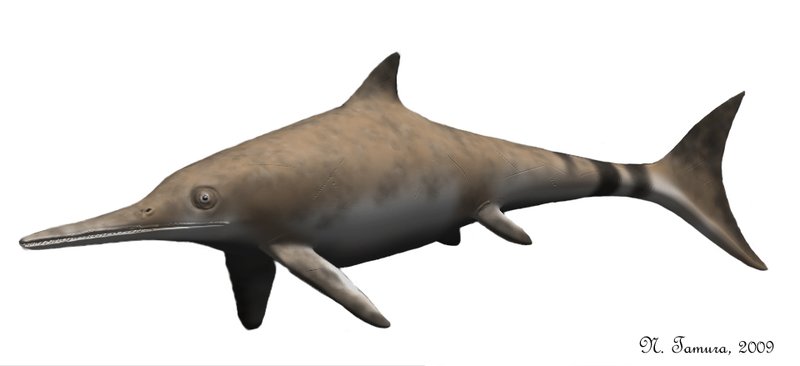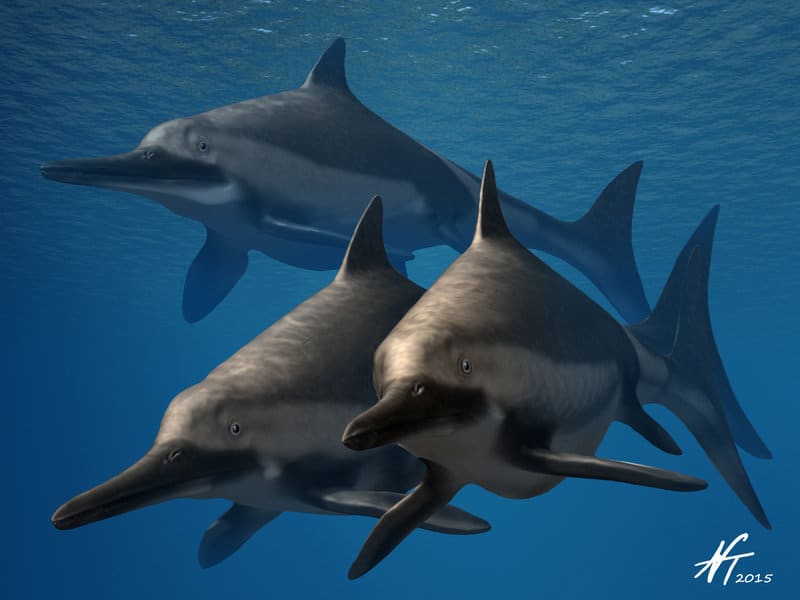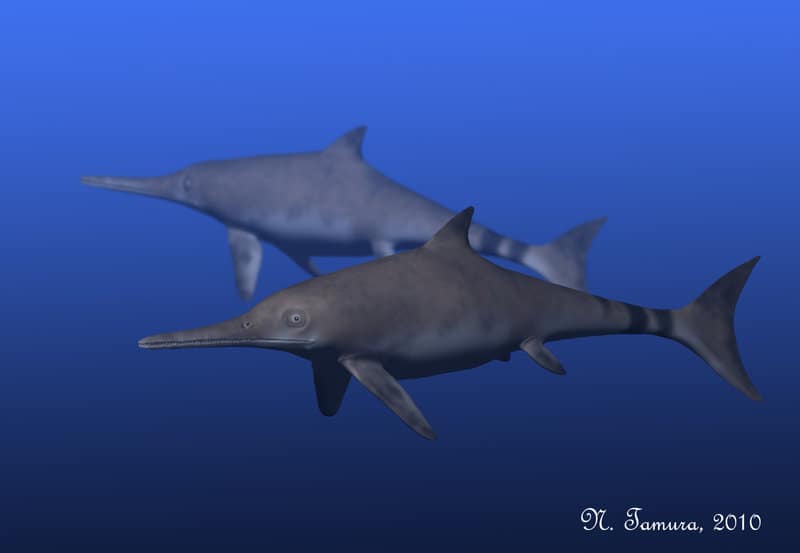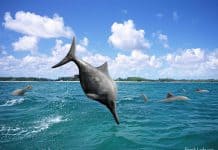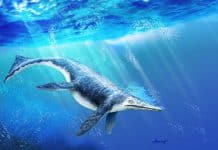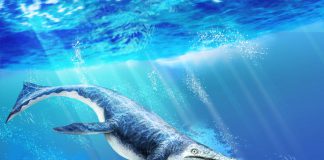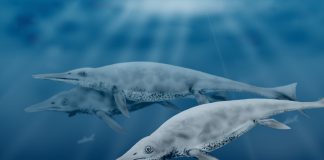Quick Ichthyosaurus Facts
- Lived during the Early Jurassic Period
- Lived in oceans worldwide
- Was a marine adapted reptile
- Was about the size of an adult human male
- Could swim as fast as a dolphin
- Was a Piscivore
- Was Viviparous (gave birth to live young)
- Lived off fish and squids
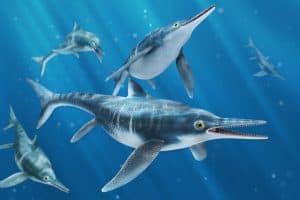
About Ichthyosaurus
Ichthyosaurus is a marine reptile which lived approximately 200 million to 190 million years ago during the Early Jurassic Period. It was first discovered during the early 19th century and was named by Henry De la Beche and William Conybeare in 1821. Its name means “fish lizard” in Greek.
If you look at Ichthyosaurus pictures, then you might mistake this animal for a prehistoric dolphin or maybe an ancient tuna. However, those assumptions would be false. This animal was actually a marine reptile which was extremely well-adapted to the ocean. It had a streamlined body, a small sail-fin on its back and it had well-designed flippers. This allowed it to really swim at high speeds through the water. Most likely, it was probably able to reach speeds of about 21 miles per hour – which is about the speed of a modern dolphin today.
Ichthyosaurus was approximately 6 feet long and weighed around 200 pounds. That made it about as long as an adult human male and made it approximately the same average weight as well. It had a bunch of tiny, razor-like teeth which it used to hunt its primary source of food – which would have been fish. It may have also feasted on many of the squids which lived during this time.
One of the most interesting facts about Ichthyosaurus is that it had large ear bones. Paleontologists believe this was an adaptation that not only allowed them to locate fish by listening for their arrival through the water but also was a way for them to listen to predators that may be approaching.
Another interesting fact about this marine reptile is that it gave birth to its young live instead of laying eggs like many fish do. Its young would most likely have come out tail-first so they didn’t drown while they were being born. As is the case with most other marine animals which breathed air and gave birth underwater.
Eventually, these marine reptiles would go extinct. This was due to the arrival of better adapted marine animals such as pliosaurs and plesiosaurs. These new marine animals would have out-competed Ichthyosaurus and some of them may have preyed on poor Ichthyosaurus.
